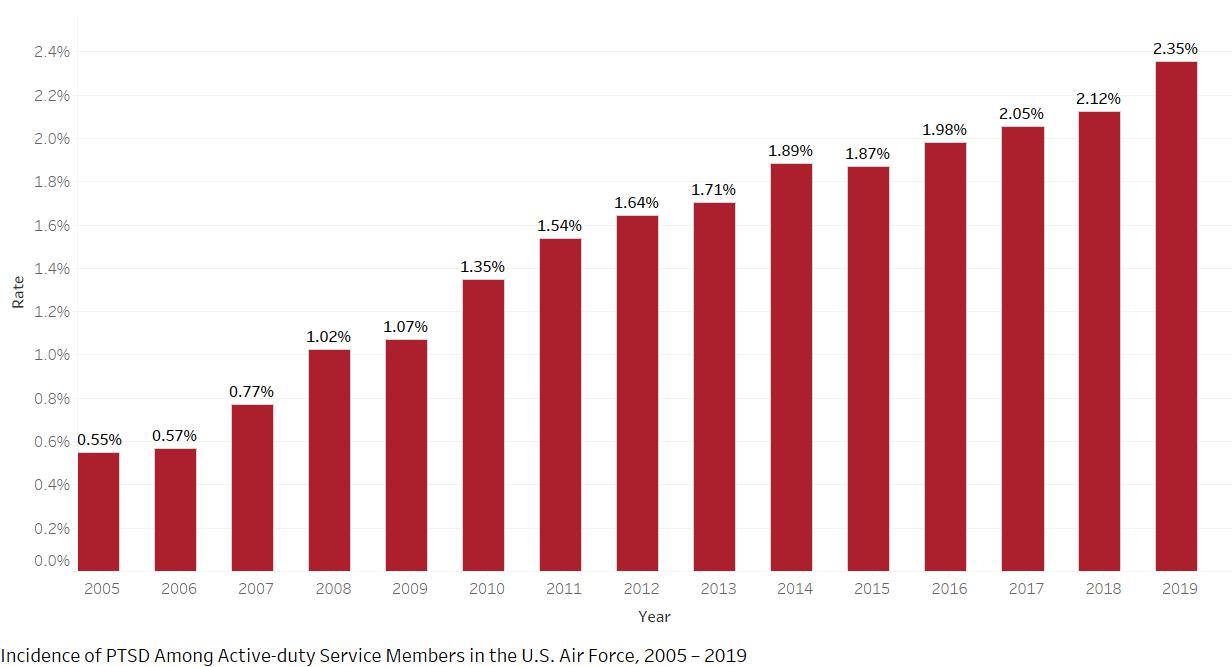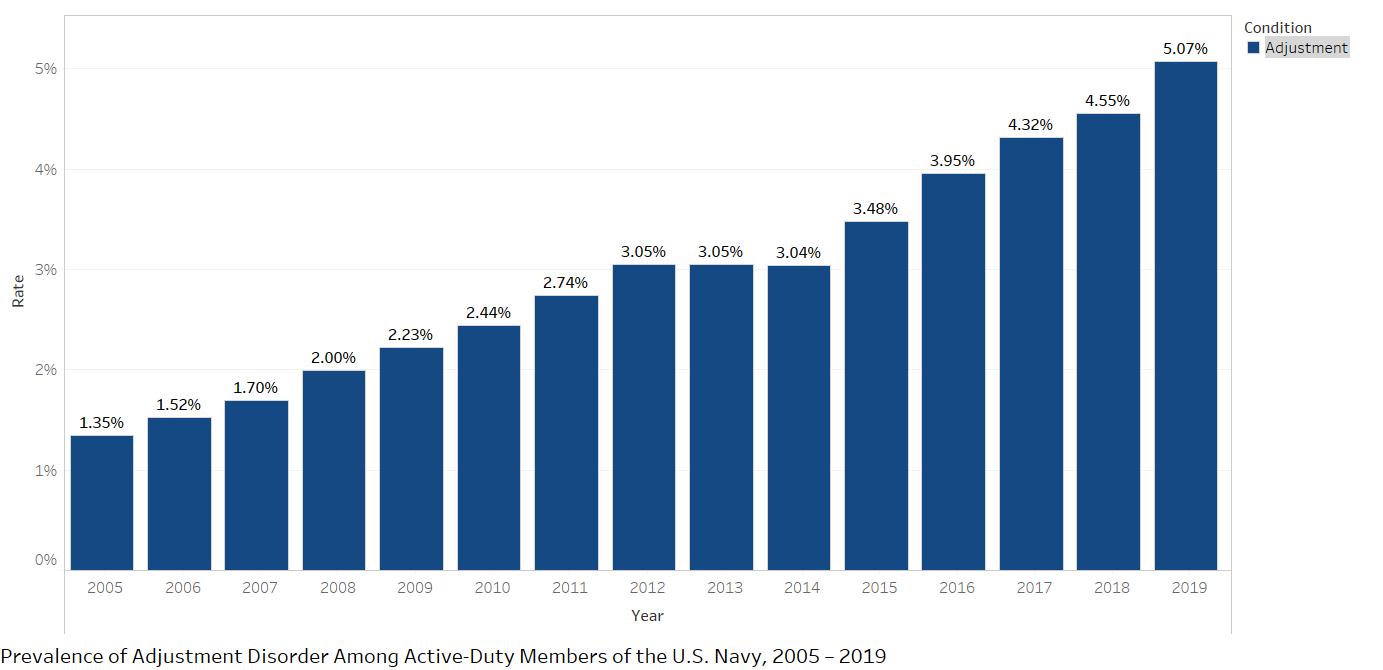Skip subpage navigation
The Psychological Health Center of Excellence leverages its data analytics expertise to provide relevant, timely, and actionable information that supports evidence-based decision-making to improve psychological health care in the Military Health System. We use medical administrative data (i.e., data that’s routinely collected as part of care delivery or third-party billing) to support our analytic efforts. The datasets we use contain information about care delivered directly in military treatment facilities as well as civilian-sector care covered by TRICARE and include:
- Patient demographics (e.g., age, sex, military status)
- Recorded diagnoses according to the International Classification of Diseases diagnostic codes
- Medical procedures/activities performed (based on a variety of medical procedural codes)
- Care settings (e.g., primary care, specialty mental health, or emergency department)
- Prescriptions written and medications dispensed
- Provider information (e.g., medical specialty, credentialing level, or assigned clinic)
- Cost of care delivered
Our analytic services can assist with your needs for clinical surveillance, program evaluation, medical intelligence, and data visualization.
We can deliver information about the prevalence and incidence of mental health conditions among service members and answer questions such as those provided below. (Click on each question to reveal the answer.)
PHCoE supports requests from within the Department of Defense, other federal agencies, and some non-government organizations and institutions.
Psychological Health Analytics
Read or download this brochure to learn more about our data analytics services.
For assistance with your psychological health analytics needs, email the PHCoE Analytics team: dha.ncr.j-9.mbx.phcoe-contact-us@health.mil.
A
As shown, the incidence of PTSD among active-duty service members in the U.S. Air Force increased by 1.8 percent between 2005 and 2019 to 2.35 percent in 2019.

A
As shown, the prevalence of adjustment disorder among active-duty members of the U.S. Navy grew to more than 5 percent in 2019.

A
As this graph shows, adjustment disorder was the most frequently diagnosed condition among service members in all branches of the U.S. military in 2019.

You also may be interested in...
You are leaving Health.mil
The appearance of hyperlinks does not constitute endorsement by the Department of Defense of non-U.S. Government sites or the information, products, or services contained therein. Although the Defense Health Agency may or may not use these sites as additional distribution channels for Department of Defense information, it does not exercise editorial control over all of the information that you may find at these locations. Such links are provided consistent with the stated purpose of this website.
You are leaving Health.mil
View the external links disclaimer.
Last Updated: April 17, 2023